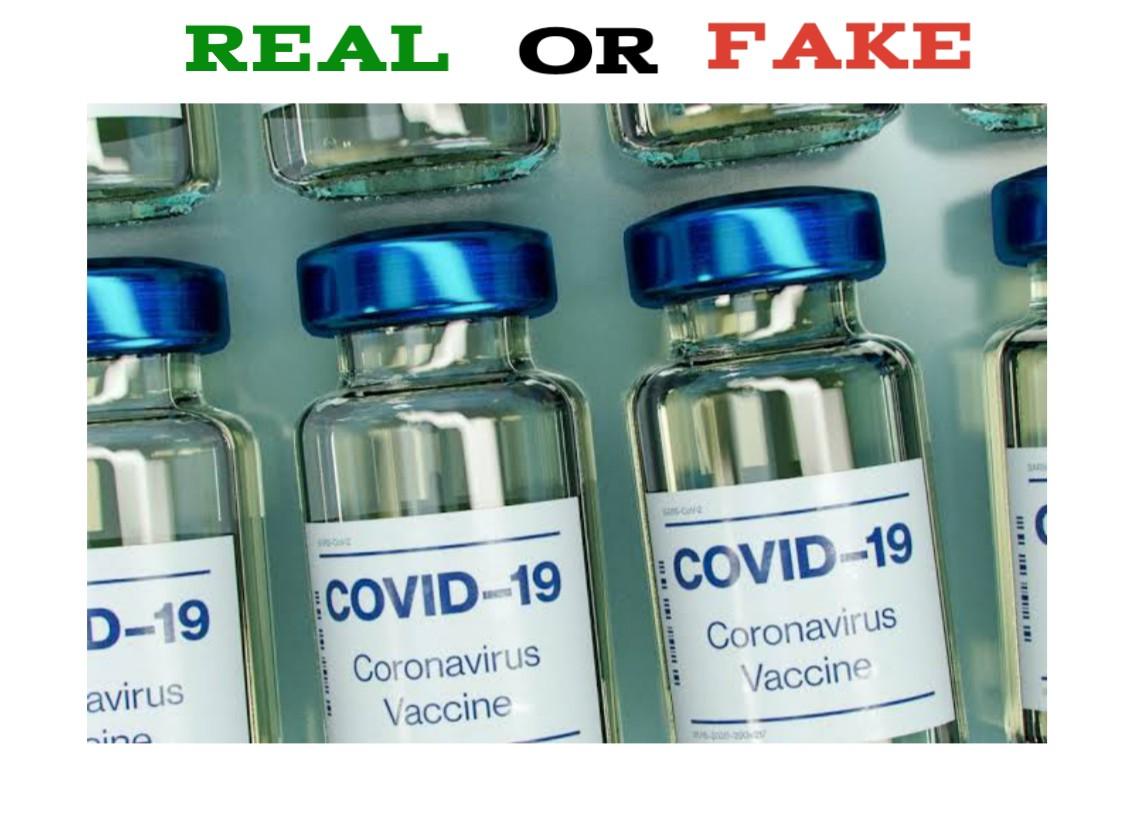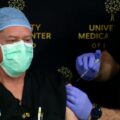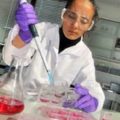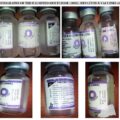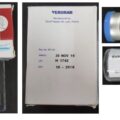When unreported coronavirus deaths are factored especially those that occurred in developing countries with limited testing capacity, deaths from the COVID-19 pandemic would have exceeded 4 million. Notwithstanding counterfeiters will stop at nothing to increase these figures with fake vaccines and counterfeit COVID 19 supplies.
This Month China’s police have arrested more than 80 members of a group assembling and distributing counterfeit COVID-19 vaccines. In raids on several locations across Beijing and cities in the eastern provinces, the police seized “more than 3,000 fake COVID-19 vaccines”. According to Xinhua News Agency, the group had been filling vials with saline and selling them as vaccines since September 2019.
Global counterfeit drug sales exceeded $75 billion about a decade ago, according to the Center for Medicines in the Public Interest. The deleterious implication of counterfeit medications is a central challenge to the integrity of public health systems around the globe, as well as a direct threat to individual health and welfare. Following the outbreak of the COVID-19 pandemic, the prevalence of counterfeit drugs appear to be rising and has not been countered by close cooperation between pharmaceutical companies, government, and international organizations concerned with trade, health, customs and excise, and counterfeiting.
What are Counterfeit COVID-19 Vaccines?
A counterfeit COVID-19 Vaccine is defined as a product that is “deliberately and fraudulently produced and/or mislabeled with respect to identity and/or source to make it appear to be a genuine COVID-19 Vaccine.
According to the World Health Organization, as of December 2020, there are over 200 vaccine candidates for COVID-19 being developed. Of these, at least 52 candidate vaccines are in human trials. There are several others currently in phase I/II, which will enter phase III.
Why are there so many vaccines in development?
Typically, many vaccine candidates will be evaluated before any are found to be both safe and effective. For example, of all the vaccines that are studied in the lab and laboratory animals, roughly 7 out of every 100 will be considered good enough to move into clinical trials in humans. Of the vaccines that do make it to clinical trials, just one in five is successful. Having lots of different vaccines in development increases the chances that there will be one or more successful vaccines that will be shown to be safe and efficacious for the intended prioritized populations.
The different types of vaccines
There are three main approaches to designing a vaccine. Their differences lie in whether they use a whole virus or bacterium; just the parts of the germ that triggers the immune system; or just the genetic material that provides the instructions for making specific proteins and not the whole virus.
The whole-microbe approach
Inactivated vaccine: The first way to make a vaccine is to take the disease-carrying virus or bacterium, or one very similar to it, and inactivate or kill it using chemicals, heat or radiation. This approach uses technology that’s been proven to work in people – this is the way the flu and polio vaccines are made – and vaccines can be manufactured on a reasonable scale.
However, it requires special laboratory facilities to grow the virus or bacterium safely, can have a relatively long production time, and will likely require two or three doses to be administered.
Live-attenuated vaccine: A live-attenuated vaccine uses a living but weakened version of the virus or one that’s very similar. The measles, mumps and rubella (MMR) vaccine and the chickenpox and shingles vaccine are examples of this type of vaccine. This approach uses similar technology to the inactivated vaccine and can be manufactured at scale. However, vaccines like this may not be suitable for people with compromised immune systems.
Viral vector vaccine: This type of vaccine uses a safe virus to deliver specific sub-parts – called proteins – of the germ of interest so that it can trigger an immune response without causing disease. To do this, the instructions for making particular parts of the pathogen of interest are inserted into a safe virus. The safe virus then serves as a platform or vector to deliver the protein into the body. The protein triggers the immune response. The Ebola vaccine is a viral vector vaccine and this type can be developed rapidly.
The subunit approach
A subunit vaccine is one that only uses the very specific parts (the subunits) of a virus or bacterium that the immune system needs to recognize. It doesn’t contain the whole microbe or use a safe virus as a vector. The subunits may be proteins or sugars. Most of the vaccines on the childhood schedule are subunit vaccines, protecting people from diseases such as whooping cough, tetanus, diphtheria and meningococcal meningitis.
The genetic approach (nucleic acid vaccine)
Unlike vaccine approaches that use either a weakened or dead whole microbe or parts of one, a nucleic acid vaccine just uses a section of genetic material that provides the instructions for specific proteins, not the whole microbe. DNA and RNA are the instructions our cells use to make proteins. In our cells, DNA is first turned into messenger RNA, which is then used as the blueprint to make specific proteins.
A nucleic acid vaccine delivers a specific set of instructions to our cells, either as DNA or mRNA, for them to make the specific protein that we want our immune system to recognize and respond to.
The nucleic acid approach is a new way of developing vaccines. Before the COVID-19 pandemic, none had yet been through the full approvals process for use in humans, though some DNA vaccines, including for particular cancers, were undergoing human trials. Because of the pandemic, research in this area has progressed very fast and some mRNA vaccines for COVID-19 are getting emergency use authorization, which means they can now be given to people beyond using them only in clinical trials.
How To Spot Fake COVID -19 Vaccines
While countries around the world are rolling out vaccine programmes in the hope of bringing the coronavirus pandemic to an end, greedy and malevolent fraudsters are mapping out schemes and strategies to defraud those who survived the pandemic and compromise public health.
Even for genuine COVID 19 vaccines proper preparation is critical for maintaining the integrity of the vaccine. Fake Coronavirus vaccines are useless and are usually dangerous to health because they are often made in an illegal, unregulated and unhygienic environment thus exposing the population to toxic elements and disease causing agents which can sometimes lead to death.
Police and health officials have warned that criminals will try to sell unregulated COVID-19 treatments as governments start vaccinating citizens against the coronavirus. On December 4, the European Union’s crime agency Europol issued a warning about fake vaccines being sold online. One of the COVID vaccines targeted was the Pfizer/BioNTech and Moderna, Vaccine, according to a WSJ Video, Watch Here
According to reports not even trained personnel tasked with administering the vaccine will be able to test on the spot if the liquid contains the authentic mRNA vaccine. The technology needed to make these observations in the field simply doesn’t exist, says Nikos Passas, professor of criminology and criminal justice at Northeastern. Sometimes a high tech laboratory test is the only way to identify the difference.
To fight the trade of counterfeit vaccines and other medicines and supplies, Passas and a team of researchers are analyzing global trade networks and collaborating with pharmaceutical companies, banks, and law enforcement worldwide on how to ensure quality control and stop the illicit flow of potentially ineffective—or even fatal—fakes.
In the US, the risk of fakes is minimal as the Department of Homeland Security, which is playing a large role in overseeing quality control, published a list of guidelines to help consumers avoid fake vaccines:
- Always consult a licensed medical professional to obtain a COVID-19 vaccine or treatment.
- Make sure your doctor has been approved to administer the vaccine.
- Do not buy COVID-19 vaccines or treatments over the internet.
- Do not buy COVID-19 vaccines or treatments through an online pharmacy.
- Ignore unsolicited offers for vaccinations and miracle treatments or cures.
- Don’t respond to text messages, emails or calls about vaccines and treatments.
- Be wary of ads for vaccines and treatments on social media.
- Any suspicious activity can be reported to: covid19investigations@dhs.gov.
Dangers of unauthorized vaccines
In the worst case scenario, a counterfeit vaccine could directly harm a person. For example, the water used in the fake vaccine liquid could be contaminated with something unsafe for humans, Amiji says.
But even if the counterfeit vaccine doesn’t cause direct complications, it still won’t prevent COVID-19, and that could provide people with a false sense of security, Amiji says. People might engage in unsafe behaviors under the assumption that they’re protected from COVID-19.
In addition to counterfeit products, the task force also investigates stolen and smuggled authentic goods. In these cases, the vaccines are real, but if they travel through illicit or unsupervised channels to reach consumers, the quality of the vaccine could be compromised, Amiji says.
The mRNA vaccines in development in the U.S. require complicated storage in extremely cold freezers, making it difficult for unauthorized organizations to ship or store the vaccine properly since they might not have access to the necessary technology, Amiji explains.
The degradation process—changes in the chemical makeup of the vaccine that make it less potent or different entirely—is one of the main concerns for the mRNA vaccines, especially in substandard supply chains that don’t have access to freezers or dry ice, Amiji says. In the worst case scenario, degraded vaccines could be dangerous for humans.
For other countries with limited capacity to ensure quality it is important to adopt the Interpol’s mechanism for avoiding fake medicines and vaccines by Looking out for the “six Ps”:
Place – Never buy medicines from unknown websites or in a marketplace. Buy medicines and vaccines only from licensed suppliers who display an authenticity certificate. If you are unsure about a supplier’s credentials, check the list of registered dispensaries at your local health regulatory body. This applies to suppliers both online and offline.
Prescriptions – Only buy medicine and vaccines that has been prescribed by your doctor or healthcare professional. When buying online, make sure the website requires you to present a prescription. Do not buy from websites that offer prescriptions on the basis of questionnaires or do not have a contactable pharmacist.
Promises – Be wary of pharmacies that offer “too good to be true” promises. False promises to watch out for are “cures all types” of a major illness, “money-back guarantee”, “no risk” or “limited supply – buy in advance”.
Price – Check the price against products you usually buy or with reputable providers. If it is substantially cheaper, it is likely to be a fake.
Privacy – Do not supply any financial information to a website, unless you are sure it has a secure online payment system. The trade in fake medical products has also been linked to credit card fraud and identity theft. Do not reveal any personal information beyond appropriate medical details.
Product – Compare the medicines against your usual prescription. A medicine is fake if:
- It contains too much, too little or any different ingredients;
- Claims to have different properties or side-effects;
- Has a different shape, size, taste or colour;
- Is not correctly labelled or not labelled at all;
- Has an out-of-date or missing expiry date;
- Does not contain information on how to store the medicine;
- The packaging looks poorly constructed or appears to have interfered with;
- There are spelling or grammatical errors on the packaging or instructions.
Remember Counterfeit medicine is fake medicine. It may be contaminated or contain the wrong or no active ingredient. SEE: How to Spot Fake N95, NIOSH, or KN95 Face Mask From China


